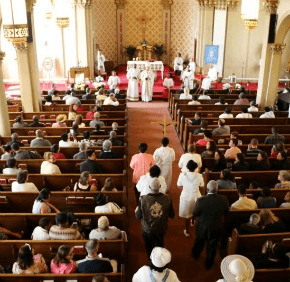
Archbishop William E. Lori welcomes his brother bishops to St. Peter Claver in West Baltimore Nov. 14. (Kevin J. Parks/CR Staff)

The combined choir of St. Peter Claver, St. Pius V and New All Saints sings during Mass for the United States Conference of Catholic Bishops at St. Peter Claver Church in West Baltimore Nov. 14. (Kevin J. Parks/CR Staff)


Also see:
Religious liberty key part of church ministry, Archbishop Lori tells fellow bishops
Big lessons to be learned from small actions, departing USCCB head says


